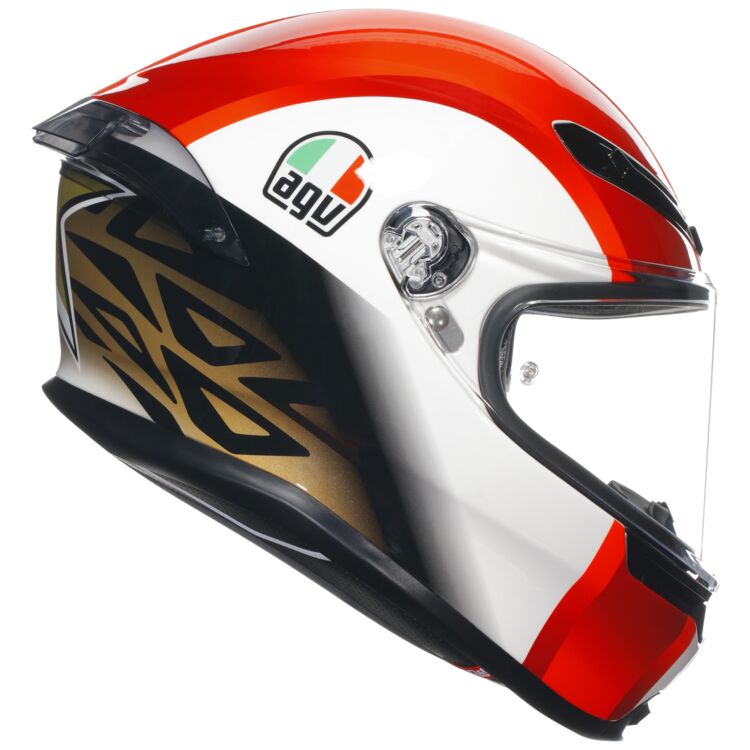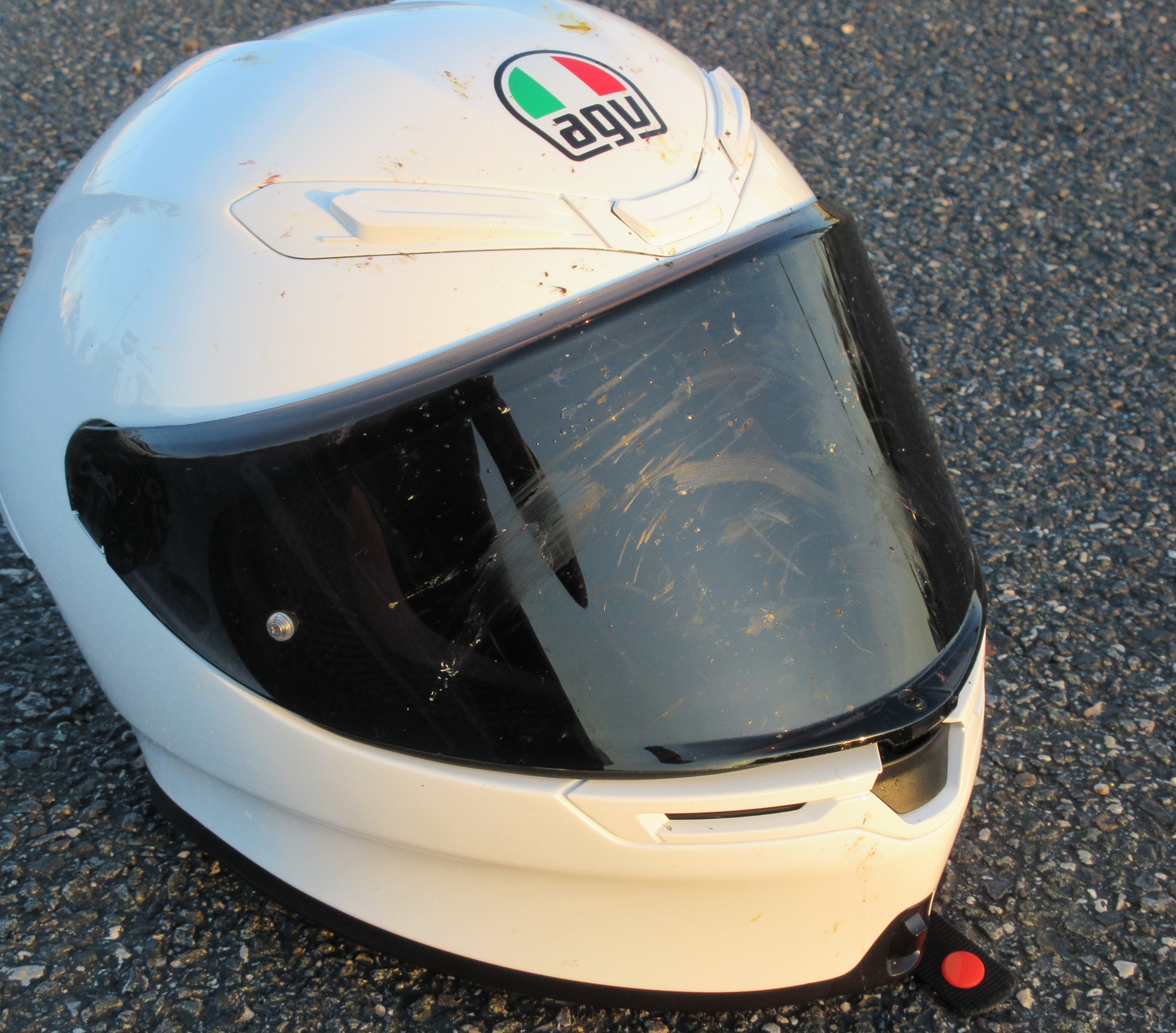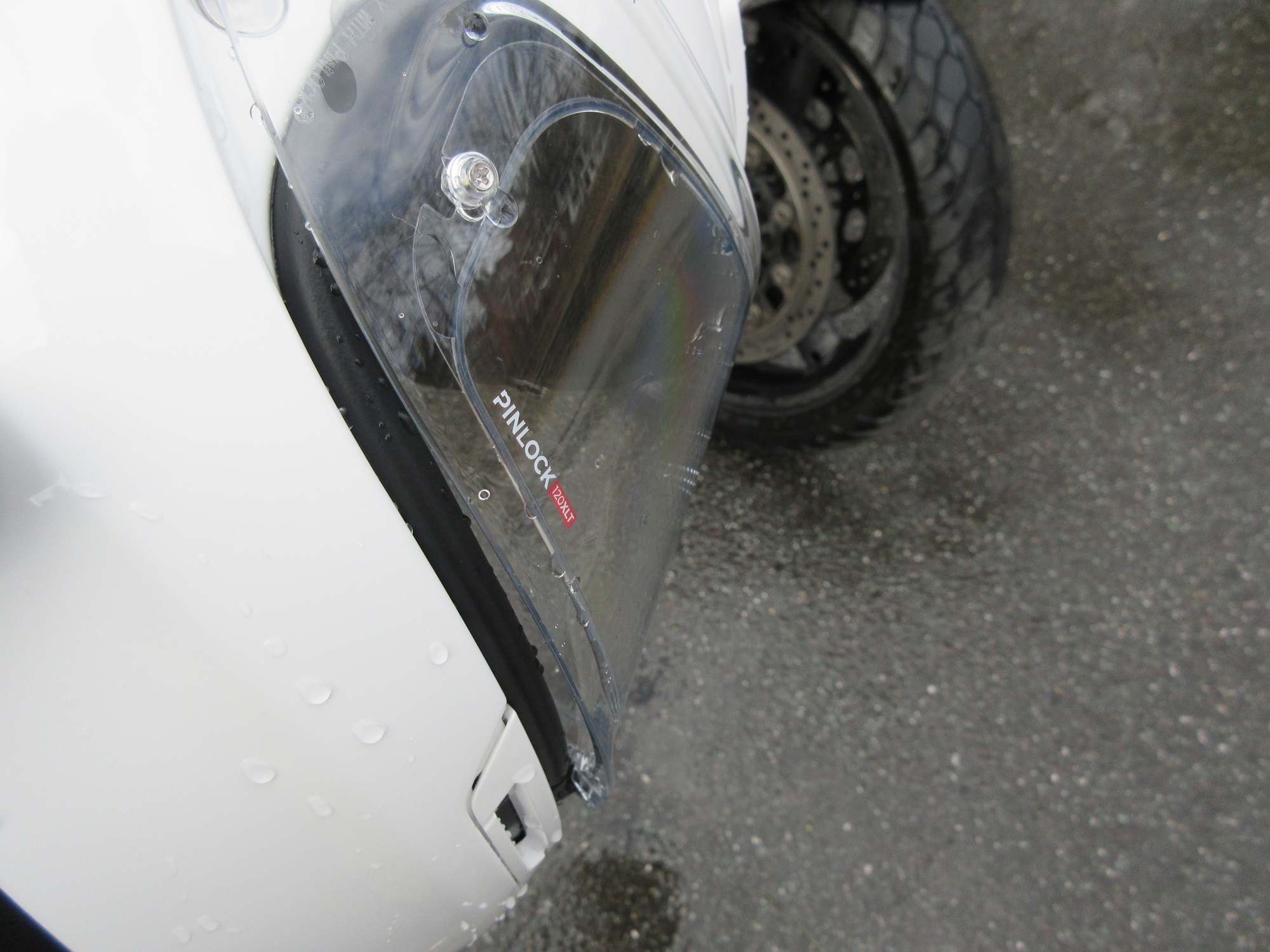After plenty of local rides and a 2,000-mile round trip from my home in Massachusetts to Road Atlanta in Georgia to cover the opening round of MotoAmerica racing, I have the on-road experience I need to review the new AGV K6 S helmet I’m currently wearing.
The unsurprising part is that I haven’t had many surprises. The AGV K6 S is the successor to the K6 that I’ve been using for the past five years — which means the old one was ready for retirement, or at least semi-retirement. When I got the first K6, it shared duty with one of the standards in the premium, full-face motorcycle helmet category, a Shoei RF1200, and I wrote a comparison of the two back then. Each had its advantages, but a few of the features I really liked on the AGV were the exceptionally light weight, the sturdy but easy-to-use mechanism for changing the faceshield, and the expansive eyeport, which gives a feeling of openness and a maximum range of peripheral vision.
My traveling motorcycle these days is a 2014 Honda VFR800 Interceptor Deluxe, perhaps the ideal machine to epitomize the classic sport-touring motorcycle. But the riding position does lean toward the sporty end of the spectrum, not the touring end, and even with HeliBars inserts added to the clip-ons, I find myself in a forward lean that forces me to hold my head tilted up slightly. It’s not a strain, like the riding position on my former Triumph Daytona 675, but on a 10-hour day it can lead to sore neck muscles. I found I preferred the K6 to the Shoei for long rides just because the lighter weight made a difference after hours in the saddle.
The K6 S carries over the good traits of the K6, including the light weight, thanks to its carbon aramid fiber shell. The K6 S in size medium weighs two pounds, 15 ounces, just three ounces more than my old K6. The K6 S also continues the other positive features of its predecessor, such as the faceshield mechanism and the wide range of vision. So let’s look at what’s new with the K6 S and talk about its pros and cons.

AGV K6 S helmet in Marco Simoncelli replica graphics. This photo also shows the metal mechanism for changing the faceshield, which works great. AGV photo.
Changes to the AGV K6 S helmet
The K6 S is approved under U.S. DOT and ECE 22.06 standards. The K6 met the previous ECE 22.05 standard, so part of the reason for the update was to meet the evolving European safety standards.
In terms of appearance, very little has changed. The one visible difference, which is mostly noticeable with the new and old helmets side by side, is the larger spoiler on the K6 S. That’s probably one reason for the very slight increase in weight. AGV says the spoiler reduces lift by four percent, but I doubt any rider who doesn’t own a personal wind tunnel and sophisticated testing equipment is ever going to be able to tell the difference.

The new AGV K6 S on the left and the previous K6 on the right. The rear spoiler is the main visual difference.
Fortunately, my second-favorite feature of the K6 (after the light weight) has also been carried over to the K6 S, and that’s the excellent mechanism for changing faceshields. No photochromic faceshield is available for the AGV, so I frequently switch between my clear visor with the Pinlock insert and my tinted visor, depending on conditions or even time of day. The AGV mechanism makes it quick and simple. Just one spring-loaded part on each side allows the faceshield to pop off, and because the critical parts are made of metal instead of plastic, I’m confident they’ll last. The mechanism on my five-year-old K6 still works as good as it did when new.
Ventilation is also the same as the previous K6, which is to say acceptable, but nothing exceptional. There are three vents above the visor and two below, plus two passive vents underneath the rear spoiler to allow warm air to flow out. I would call the ventilation average, for a street helmet.
AGV still makes four different shell sizes for the K6 S. That means that instead of making a large shell and stuffing it with more padding to make it fit a rider who needs a size small, they actually use different sizes of shells. It reduces that bobblehead look some helmets can give. With the K6 S, AGV changed its long-standing sizing convention. Instead of S, MS, ML, L, XL, etc., AGV did what everyone else basically does already and just made one medium size, instead of medium-small and medium-large intermediate steps. My old K6 was a MS. The new K6 S is a M. I feel like both fit me just fine.
Riding test: Is the AGV K6 S helmet quiet?
I take a few long trips every year, and my recent trip to Road Atlanta in the new K6 S involved a couple of 400-mile days, one 600-mile day that was mostly Interstate highway speeds, plus a few shorter days. Noise is a big issue for me personally, for a few reasons.
For one, I get more tired on those long days when too much wind noise wears me down. Second, I already have some mild hearing loss from a lifetime of riding, despite always, always wearing ear plugs. And third, I’m just personally more sensitive to noise than most people. I’m on a lifelong quest for the best earplugs, but that’s another story. For now, I’ll just say that no helmet alone is nearly quiet enough for me, but some are better than others.
In my comparison of the K6 and RF1200 several years ago, I found the AGV and the Shoei seemed equally effective at damping noise (it’s all subjective, admittedly). This time, I compared the old K6 and new K6 S back to back on a short highway ride and I couldn’t tell any difference. That’s what I would expect, since the changes are few. On my long ride home from Georgia, I did notice some odd wind noise coming up from the neck roll that would go away if I blocked that space with my hand. That surprised me, because the neck roll is larger than what many other helmets have.
The bottom line is that K6 is quieter than most helmets, especially less expensive ones. But no helmet is quiet enough to save your hearing in the long run. Wear ear plugs, folks.

Part of my thorough testing includes the bug splatter test. Yes, the AGV K6 S splatters them with the best of helmets. Seriously, though, I did get the full experience of using the new helmet on a 2,000-mile round trip.
Things to know about the AGV K6 S helmet
There are a few things you should know about the fit and features of the K6 S if you’re thinking of buying one. In terms of fit, it’s generally an intermediate oval shape, the most common shape for helmets in the North American market.
There are a few idiosyncrasies about the K6 S that some people may not like. I know some K6 owners complained that the chin bar sits much closer to the wearer’s face than most helmets. I can pout my lips and touch the chin bar, which isn’t the case with most helmets. Also, as mentioned above, the neck roll is generous, which I like because it tends to make the helmet quieter in all conditions and warmer in cold conditions. But some people feel that a thicker neck roll makes it harder to put on the helmet. For those inclined to get a claustrophobic feeling when wearing a full-face helmet, the close chin bar and thick neck roll could contribute to that, although that’s offset by the wide eyeport, which provides a range of vision as large as any helmet I’ve worn.
If you use a Bluetooth communicator, the K6 S has deep pockets built in for the speakers, but if you’re mounting a microphone on the chin bar, then that narrow space in front of your mouth might be an issue, depending on your equipment and the shape of your face.

The AGV K6 S comes with a Pinlock-ready faceshield and a Pinlock insert included in the box. It’s the best anti-fogging solution I’ve found.
One other feature of the K6 S that some will like and some will dislike is the latch on the faceshield. A small metal latch locks the faceshield when it’s fully closed. To open it, you have to push the button with a finger while simultaneously lifting the visor. I admit, it takes some practice to get the hang of it, and even now I sometimes still flub it when I try to open the faceshield while sitting at a red light. In the event of a crash, I’m sure there is some added safety to having that third attachment point to the faceshield, but riders who are used to just flipping open the visor temporarily at a stop may find the AGV’s button system fiddly.
For around-town speeds on warm days, I find leaving the faceshield in the almost-closed position, with the latch touching but not closed, provides a welcome amount of ventilation without too much wind or noise. The detents on the faceshield also feel solid and hold it in place if you have it partially open.
The AGV K6 S costs $549.95 at RevZilla in solid colors and also comes in various graphics costing about $80 to $110 more. Not cheap, for sure, but it’s a quality helmet that’s lighter than just about any of its competition. Plus, it comes with not only a Pinlock-ready faceshield, but also a Pinlock insert. I’ve found the Pinlock inserts to be the best strategy for avoiding fogging in cold weather, and that’s a real factor since I ride year-round. I also always buy a tinted visor instead of using sunglasses and that costs a little over $100 for the K6 S.
I really appreciate the K6 S’s light weight, especially on long rides. I put up with the faceshield latch because I figure it has safety benefits. The fit of the chin bar doesn’t bother me. If you feel you fall into the same camp as me on those pros and cons and you’re shopping for a premium motorcycle helmet, the AGV K6 S is definitely one you should consider.

I haven’t seen this helmet in person yet so I’m not sure about the faceshield button you are talking about. Does it take two hands to open it?
Take a look at the photo above, the one with the insects splattered on the faceshield. You can see the black button in the top center of the chin bar, between the vents. To open the faceshield from the fully closed and locked position, you push that button with a finger and then lift the faceshield with the same finger while holding the button in. Done right, it’s one quick and seamless move with just one finger, no need for two hands. I accomplish it seamlessly maybe 75% of the time. The other times, I either don’t push the button in far enough or I don’t raise the shield with my finger before letting the button back out. It’s a little fiddly, but I also know that faceshields often pop off in a crash, leaving the rider’s eyes and face exposed to debris. That latch has to provide a little more security, so in the spirit of “Dress for the slide, not the ride,” I put up with it.
Closing the faceshield is the same as any other. Just close it all the way and the latch snaps closed and locks. You only need the button to unlock and open it.